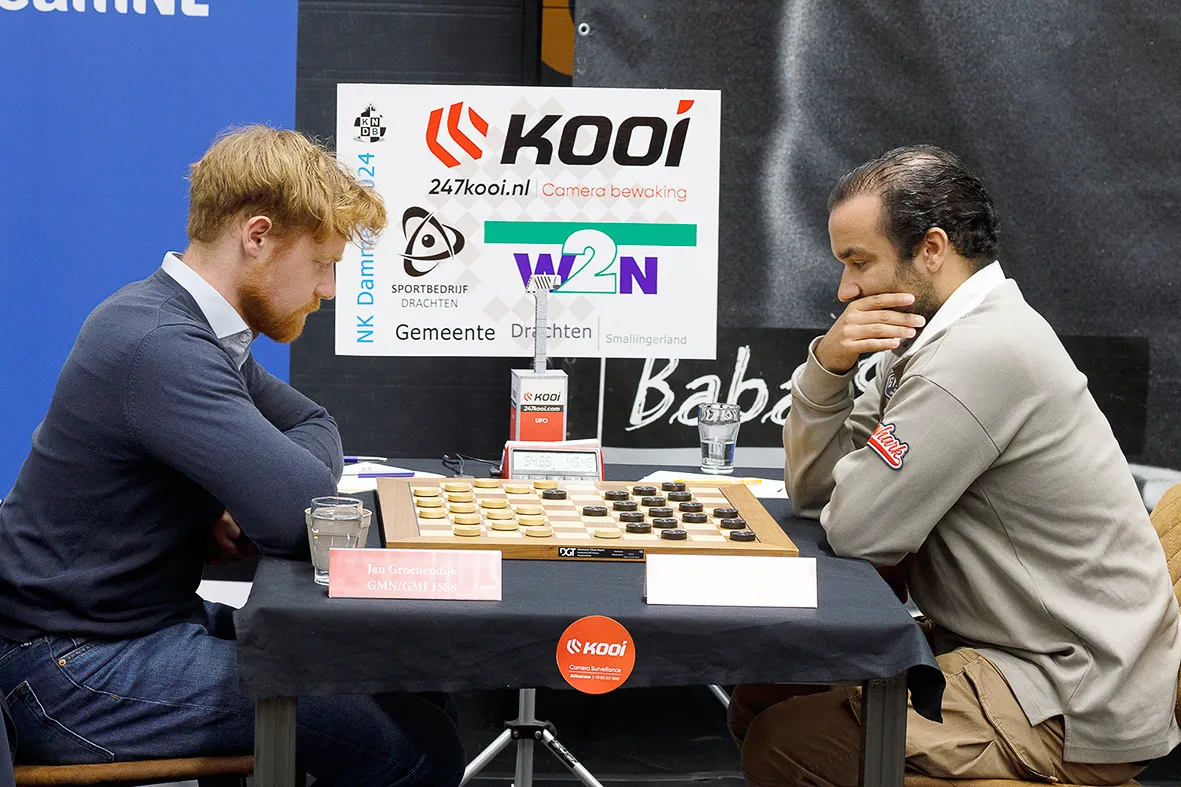The Dutch Championship is one of the greatest tournaments on the draughts calendar. The list of champions holds many important names in draughts history which sometimes have a legendary status (Keller 13-fold champion! Thijssen 5 times in a row!). With his fourth title in a row Jan Groenendijk can be added to this list - what's more, he has a chance to still climb on it.
I've participated in the Dutch Championship since 2013, but was also quite invested in the years before. I can testify that the field of participants is some years better than others. The last few editions can be considered as an absolute top tournament, especially this year with the - incidental - participation of Alexander Shvartsman. Since top players in The Netherlands are top players in the world as well, the tournament should receive worldwide attention (even though I don't know to what extent the tournament is followed abroad).
Different editions stick to my mind because of certain memorable games. Those are quite a few: Baliakin-Boomstra 2010, 2011 and 2013 (as a revenge for Boomstra's lightning fast win in 2009), Baliakin-Meurs 2013 and my defeats versus Groenendijk in 2019 and 2022, as well as my loss against Jitse Slump last year, a game which I analysed before for Damkunst. (While I sum up these games, I notice it mostly concerns Boomstra's and my games; so quite probably it is subjective, but I still believe each and every game were important, on both a technical and sportive level.)
At the start of the game seven rounds had been played, Groenendijk is on top with a +4 score followed by Slump, Shvartsman and Baliakin at +3 and then Van IJzendoorn at +2. Both players are doing well, Groenendijk is in an amazing spot while Van IJzendoorn still has to catch up to make it to the podium. Remarkably, Groenendijk missed a huge chance against Kreeft in the previous round to reach +5. Groenendijk and Van IJzendoorn have known each other from an early age, conquered the draughts Olympus together and fought out many a juicy brawl on the draughts board with varying outcomes. This game forms a beautiful new chapter, both in Dutch Championship history and head-to-head!
Side point: I have commented on this game in two rubrics in Dagblad van het Noorden/Leeuwarder Courant on 7 and 14 October - luckily for Damkunst I can bring some more depth into the variants!
